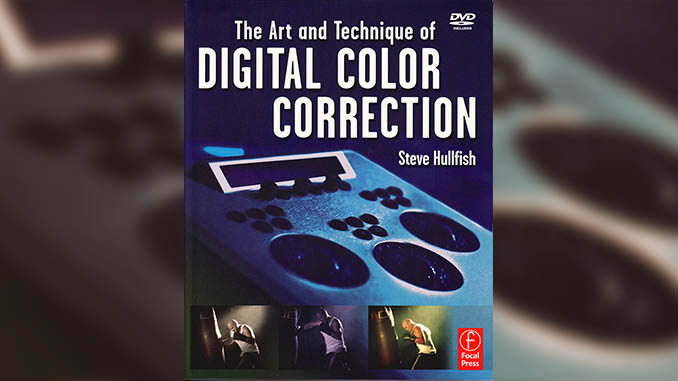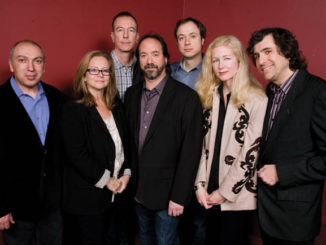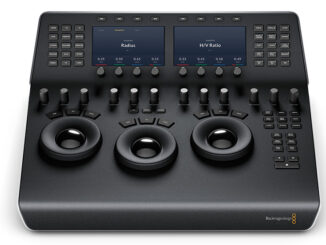
by Ray Zone
The Art and Technique of Digital Color Correction
by Steve Hullfish
Focal Press
373 pps., paperbound, $49.95
ISBN: 978-0-240-80990-8
The number of new tools for color correction of motion pictures has exploded in recent years. Now, it’s possible to do sophisticated color correction without the use of expensive hardware like film scanners or telecines. And increasingly, color correction has moved onto the same platforms that are used for editing. With a previous book, Color Correction for Digital Video, co-written with Jamie Fowler, Steve Hullfish assembled essentially a primer addressing various color-correction tools and monitoring the process with scopes, video monitors and RGB sampling techniques. Hullfish’s new book is a hands-on guide offering the reader––through the use of an accompanying DVD––the opportunity to work in real-world conditions with the same images as some veteran colorists. Over the years, Hullfish has interviewed many colorists and their comments and insights provide a substantial portion of this new volume.
When his first book was published, Avid and Final Cut Pro (FCP) were beginning to incorporate color correction into their product lines. Now many applications, from NLE (nonlinear editors) and motion graphics software to compositors and DVEs (digital video effects boxes) have included color-correction plug-ins and systems. Though most of the colorists in the new book have usually worked on the da Vinci color correctors––usually the da Vinci 2K––the new book is agnostic and doesn’t rely on specific buttons or sliders so that a reader using FCP or Avid, with its built-in color correction, can follow along with the various tutorials.
Other stand-alone desktop color-correction products like IRIDAS’ SpeedGrade, Synthetic Aperture’s Color Finesse or Red Giant’s Colorista are also included in the discussion. In a two-page spread in the book, the working desktop environments for each of these products are reproduced side-by-side. And the entire book is printed in color, as one would expect.
Color correction, like editing itself, is definitely something that is learned through practice.
The 11 chapters in the book are broken down into three main sections: Primary Color Correction, Secondary Color Correction and Pro Colorists. With the first chapter addressing tonal range, Hullfish reviews fundamentals of primary color correction. In the margins of the book, definitions of key terms are printed alongside the various subjects covered. In the professional world of color correction, terminology is frequently varied. Tonal ranges, for example, are generally broken down into shadows, midtones and highlights. But, as Hullfish points out, “Sometimes shadows are referred to as blacks, pedestal, setup, lift, or even lowlights. Midtones are often referred to as gamma, but also as grays or mids. Highlights are sometimes also referred to as whites, gain, luma, or even video.” These were all terms used by the colorists that Hullfish interviewed for the book. And, he points out, “The terminology in the book will not remain the same, because in real life, these terms are often interchanged sometimes even by the same speakers.”
The first thing a colorist must do is create a proper viewing environment in which to do the work. This environment will be daylight balanced. It is generally acknowledged that the color temperature of daylight is about 6,000 to 6,500 degrees Kelvin (K). The daylight-balanced light is usually bounced off a back wall behind the monitor as reflected light. Bulbs and other light sources should not be directly visible to the colorist’s eyes while working. The walls should be a completely neutral gray. Hullfish recommends an 18 percent photo gray and notes that many color suites aren’t even painted, but are covered in gray cloth, which reduces reflected light and glare.
Though there are waveform monitors and vectorscopes built into the software of most desktop applications, Hullfish states that they are “barely sufficient” for color correction and do not stand up to the needs of a professional. He recommends the use of an external waveform monitor and vectorscope, as well as double-checking that the scope is monitoring the type of signal that is actually being recorded to tape. All of the colorists interviewed in Hullfish’s book used a Tektronix scope (either WFM700 or WVR7100).
The waveform monitor will display an RGB Parade with individual levels of the red, green and blue channels in separate cells, following a first cell indicating luminance (Y). The colorist can work directly with these RGB and Y waveforms to amplify or reduce individual colors. Most colorists begin by first addressing the black level in the image. Hullfish uses an image from the DVD and gives a step-by-step procedure for grading the black in the image using the low-pass––or luminance-only––mode of the waveform image. The black levels can be lowered for greater contrast in the overall image and sometimes “crushed” so that detail begins to be lost in deep shadow areas.
Steve Hullfish has interviewed many colorists and their comments and insights provide a substantial portion of this new volume.
Any changes to color in the overall image made in this manner are primary color corrections. Changes made separately to individual elements in the image are secondary color corrections. By working through Hullfish’s tutorials using the images on the DVD, an aspiring colorist can gain a very useful understanding of the fundamental tools used by many of the most proficient professionals working today.
Color correction, like editing itself, is definitely something that is learned through practice. Hullfish’s book provides pragmatic instruction that can prepare the student of color for work in the trenches of color grading. It’s a fast-paced world and most colorists on average turn out ten color-corrected shots in an hour, sometimes more.
The tools for color correction will evolve fairly rapidly and there may be a necessity for a second edition of this book at a certain point in the future. The fundamentals of color amplitude that Hullfish discusses in his book, however, will remain constant.





